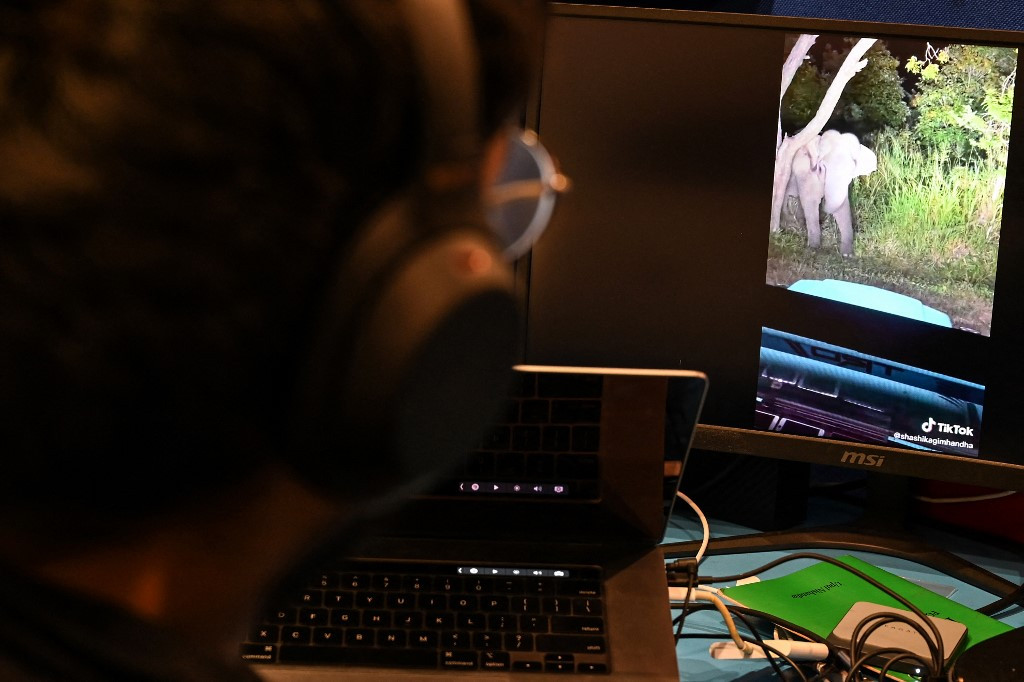Social media algorithm, the enemy of creators
The constantly changing algorithms on the social media landscape has made it more difficult for older creators to keep up and for new creators to build their audience.
Change Size

I
have been a professional content creator for around eight years. I remember the first time I used Instagram was in 2014, when the platform still had a default chronological feed. Instagram is an interesting platform because it can be a means to connect with many people, not only in Indonesia but also throughout the world.
In the beginning, Instagram was a community-oriented platform that wanted to invite as many users as possible to create content, upload posts and build the community.
Back then, not many people were using Instagram, which was dominated by esthetic photos in a square format. This user-friendly algorithm was fun, and since Instagram was a community, it focused on its creators. We could also enjoy content immediately after its creator uploaded it.
As time passed, more and more creators appeared. These new creators saw a promising opportunity in social media platforms. The numbers were no joke: millions of creators emerged to capture users’ attention. They competed in producing content that would attract viewer interest amid an ever-changing algorithm, which made it increasingly difficult for new creators to make their mark on the platform.
Since 2018, Instagram has been constantly and randomly changing its algorithm. Some Instagram users feel confused because they get notifications for uploads not made by their friends, but still appear in their feeds. In addition, the Instagram algorithm covers only 10 percent of all followers.
From its origins as a community, Instagram seemed to have shifted into a profit-making platform, ensuring that many creators can monetize their content.
This is what is called the creator economy, in which creators have the opportunity to turn content creation and development into a career that earns revenue. Content creation can take various forms, such as brand collaboration (endorsement or product collaboration), speaking at a workshop, selling products to viewers (merchandising) and more.
To develop Instagram into a platform where creators can earn an income, the company updated its algorithm by introducing ad monetization.
As the Instagram algorithm is constantly changing, it has become even more difficult for creators to build brand awareness and engagement when they are competing with sponsored content that is often placed front and center. In a way, Instagram encourages creators to use ads so their content is visible to a wider audience. This is, of course, unprofitable for new creators who rely on organic growth.
On the other hand, many creators want to return to the chronological algorithm, under which the platform is more focused on creator growth. Instagram has tried to listen to feedback from its creators, and has thus introduced two new features, Favorites and Following.
The Favorites feature shows the latest content from your selected or favorite accounts, such as those of your closest friends or favorite content creators. The posts in Favorites will appear higher in your home feed.
Meanwhile, the Following feature shows posts from people you are following. Favorites and Following display posts in chronological order, so users can quickly follow the latest posts of their favorite content creators.
On both Instagram and Twitter, longtime creators benefit from the latest algorithms and feature updates because they have already built their tribe, but what about the fate of new creators? Will they have the same opportunities?
Instagram also changed from the square photo format to a video format, followed by the emergence of Reels. Creators who are familiar with photo formats should start adapting to the video format and produce video content for TikTok, YouTube Shorts or SnackVideo.
Moreover, TikTok's growth has accelerated in the past year as a content distribution platform. The emergence of TikTok posed a separate threat to Instagram and YouTube, because it switched audience habit from viewing content in the form of long photos and videos to consuming short video content with a maximum duration of 1 minute. In other words, the public loves content in the form of short videos.
With this new habit of short video consumption, creators must adapt to social video platforms like TikTok and SnackVideo in order to thrive. However, SnackVideo can be an option for reaching a wider audience because it offers content recommendations that focus on the creator, not the content.
This is certainly very helpful for newbies who want to focus on developing their careers as content creators in today’s social media landscape. For example, if a creator posts a cat video on Instagram, they will have less chance of getting likes and engagements than if they published the same video on SnackVideo.
Creators need to distribute (repurpose) their content across a variety of social media platforms to increase their visibility, rather than relying on just one platform. That way, their work can reach more diverse audiences.
The new challenge that content creators are facing, however, is adapting to various platforms and their specialized type of content. TikTok, YouTube and SnackVideo creators, unlike Instagram creators, need time to explore these platforms and learn how users interact in order to produce the right type of content their target users will love.
But if a creator succeeds in attracting an audience across multiple platforms, it is easier for that creator to last longer and become relevant to new audiences.
My prediction is that, in less than five years, the popularity of these new platforms will be even higher and more promising for not just established creators, but even up-and-coming creators.
***
The writer is cofounder and creative director of vosFoyer, a creative consultancy based in Jakarta.









